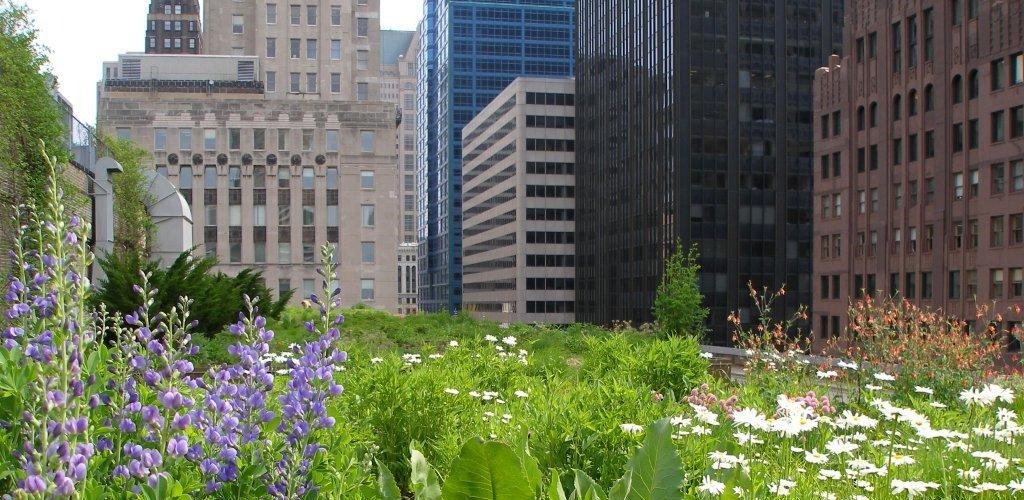Jeff Glorfeld of COSMOS | The Science of Everything writes:
Heaviside and colleagues also found that green roofs – surfaces covered in vegetation – “cannot match the hazard reduction potential of cool roofs unless they are well irrigated, but irrigation may place increased demand on water resources, which are likely to already be stressed in hot areas”.
As reported in Cosmos under the title “Cool roofs reduce urban heat; green ones, not so much”, Clare Heaviside of University of Oxford’s Environmental Change Institute and other researchers find reflective white cool roofs offer a low-tech solution to mitigate urban heat islands through the modelling study Potential benefits of cool roofs in reducing heat-related mortality during heatwaves in a European city. Vegetated roofs are shown only to be as effective as cool roofs if they are “well irrigated.”
We do know some green roofs need irrigation more than others, but how much water means “well”? And there are sustainable ways to irrigate including via harvesting, etc., which wouldn’t place a burden on water resources that is not considered. Plus, the study does not mention how light-colored cool roofs can lose their reflectivity, and hence effectiveness, over a relatively short period of time if not cleaned and maintained properly.
When Cosmos says “green ones, not so much” it makes it sound like greenroofs don’t reduce urban heat much at all. Although they could argue not so much as compared to cool roofs, that’s not how it reads.
Of course, when comparing the two different cooling strategies, greenroofs offer an array of public and private benefits over white or light colored cool roofs, which mainly reduce ambient air temperatures and related indoor temperatures. The two have multiple competing benefits which need to be assessed when choosing one over the over.
Ashish Sharma, PhD of the University of Notre Dame’s Environmental Change Initiative agrees both are effective at reducing the Urban Heat Island effect in cities.
But what do you think about the statement: “Cool roofs reduce urban heat; green ones, not so much”?
Watch the “Green and cool roofs to mitigate urban heat island effects in the Chicago metropolitan area” video by NDECI below to hear from postdoctoral researcher Dr. Sharma:
https://youtu.be/170ceT_dvcE
Read more: Cool roofs reduce urban heat; green ones, not so much
 Greenroofs.comConnecting the Planet + Living Architecture
Greenroofs.comConnecting the Planet + Living Architecture






Clayton Rugh
Well… since you’ve asked for thoughts regarding the comment, “Cool roofs reduce urban heat; green ones, not so much”, here you go:
Short response: Incorrect. Green roofs are quite effective for urban heat reduction.
Longer version: Both green and white roofs are “cool roofs”, since the term is used as contrast to dark-colored conventional roofs (aka “hot” roofs?). Ample research has demonstrated green vegetated roofs substantially reduce roof top temperatures, thermal loading through roof structures, building energy consumption, and urban heat island effect at levels similar or exceeding white reflective roofs.
The *only* relative advantages of reflective roofs over green roofs are white roof cost may be roughly equivalent to conventional roofs and no additional structural load-bearing capacity is required.
The many advantages of green vegetated roofs over white roofs are comparable thermal benefits PLUS concurrent stormwater management, pollinator habitat, absence of reflective glare / heating into adjacent buildings / windows, improved aesthetic sight lines, mixed-use amenity roof space, particulate and greenhouse gas mitigation, double or greater roof lifetime extension (offsetting all or part of the higher green roof cost), etc. The extended roof lifetime alone gives green roofs many additional benefits by avoiding more frequent roof replacement costs, workplace disruption, materials consumption and landfill waste.
White reflective roofs definitely offer a cost effective urban cooling option for restricted weight roof structures or in climates where low-maintenance vegetated roofing is not yet a viable alternative. For most temperate climate cities, well designed green roofs achieve comparable heat reduction and a substantially broader range of ecological and municipal benefits at modestly higher initial costs, whose investment is returned by the longer functional lifetime.